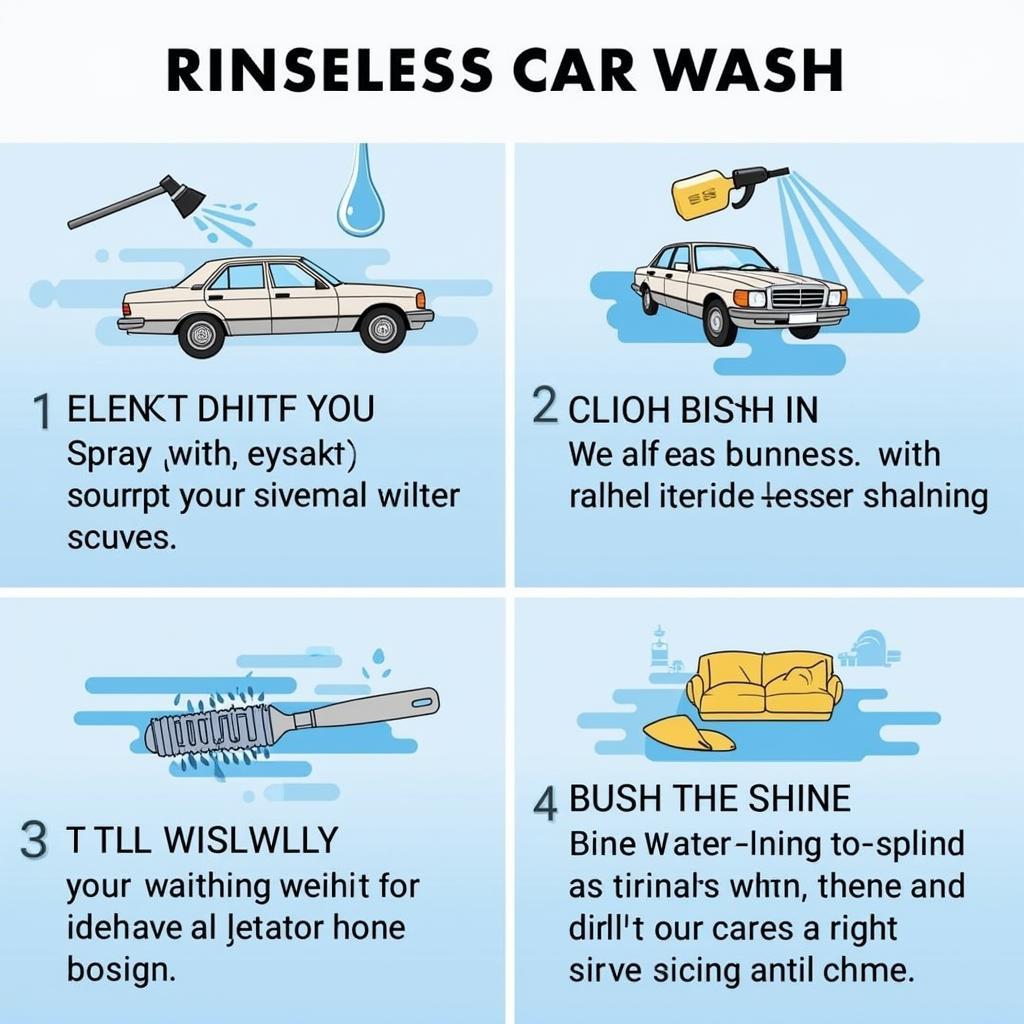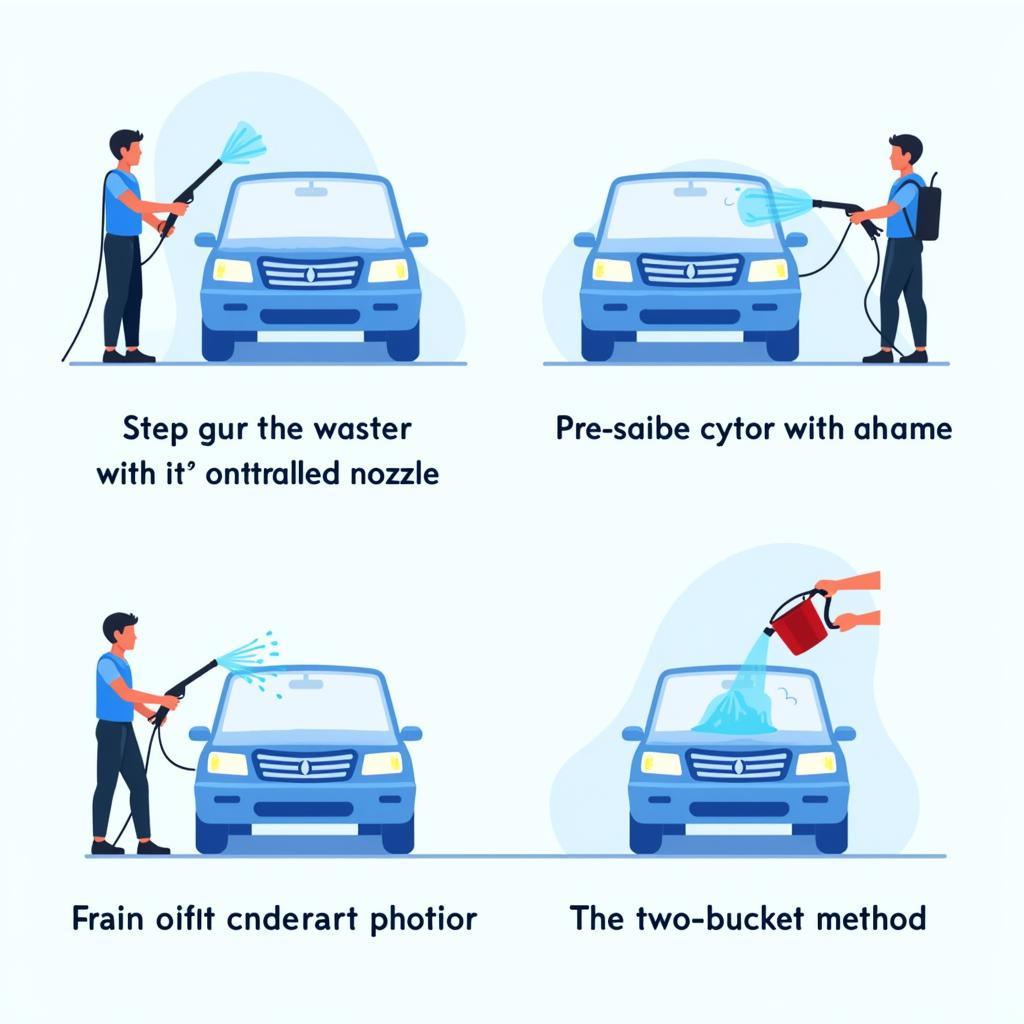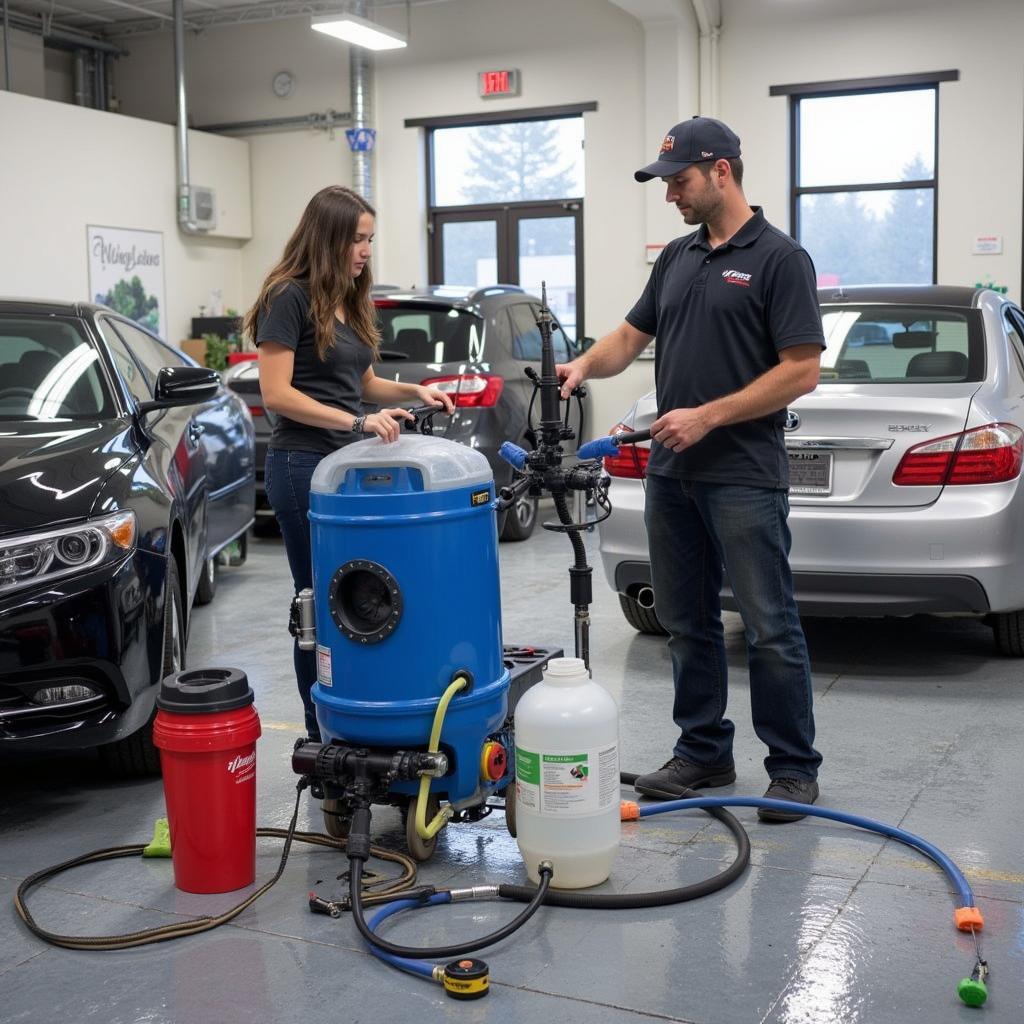A thorough car detailing can dramatically improve a vehicle’s appearance and protect its paintwork, but how much water is actually needed to achieve those sparkling results? The answer isn’t a simple one-size-fits-all, as water usage depends on several factors, from the size of the car to the detailing methods used. Let’s dive into the details and explore the various aspects impacting water consumption during a car detailing process.
Factors Affecting Water Usage in Car Detailing
Understanding the variables that influence water consumption is key to optimizing your detailing process and minimizing water waste. Several elements contribute to the total water used:
- Car Size: A larger vehicle like an SUV or truck will naturally require more water to rinse compared to a compact car.
- Detailing Method: Traditional washing with a hose uses significantly more water than rinseless or waterless washing techniques.
- Level of Soiling: Heavily soiled cars require more pre-soaking and rinsing, thus increasing water usage.
- Equipment Used: High-pressure washers and foam cannons can help reduce water consumption compared to a standard garden hose.
- Detailer’s Experience: An experienced detailer can often achieve a perfect finish with less water due to efficient techniques and product usage.
Traditional Washing vs. Waterless/Rinseless Washing
The method you choose significantly impacts water usage. A traditional car wash with a hose can easily consume between 50 to 150 gallons of water. In contrast, rinseless and waterless car washes drastically reduce this amount. Rinseless washes typically use around 1-2 gallons of water mixed with a specialized solution, while waterless washes utilize lubricating sprays that lift dirt away without rinsing. For those looking for eco-friendly solutions, learning how to detail a matte car often involves water-conscious techniques.
 Rinseless car wash process showcasing the steps and materials involved.
Rinseless car wash process showcasing the steps and materials involved.
Minimizing Water Usage in Car Detailing
Even with traditional washing methods, you can minimize water waste. Here’s how:
- Pre-soaking: Loosening dirt and grime with a pre-soak reduces the need for extensive rinsing.
- Pressure Washer: Using a pressure washer with a variable nozzle allows for controlled water flow and minimizes wastage.
- Optimizing Rinse Technique: Rinsing from top to bottom and using a sheeting method can help reduce water usage.
- Two-Bucket Method: This method prevents cross-contamination and reduces the need for frequent water changes. Just like understanding what you need to start detailing cars, minimizing water usage is a crucial aspect.
 Illustration of water-saving car wash techniques for eco-conscious detailing.
Illustration of water-saving car wash techniques for eco-conscious detailing.
Calculating Water Usage for Your Detailing Needs
While estimating precise water usage is difficult, understanding the factors involved helps you make informed choices. Consider the size of your vehicle, the level of soiling, and your chosen detailing method. For example, a heavily soiled SUV undergoing a traditional wash may consume close to the upper limit of the estimated range, whereas a regularly maintained compact car using a rinseless wash would be at the lower end. It’s also important to think about the legalities of mobile detailing, as covered in our article do you need license to do mobile detail cars.
Professional Detailing Services and Water Consumption
Professional detailing services often have optimized processes and equipment designed to minimize water usage. They may utilize water reclamation systems, employ rinseless or waterless techniques, and adhere to best practices for responsible water management. Understanding what’s all needed for a mobile car detailing business helps in assessing their water conservation practices.
 Professional car detailing highlighting water efficiency and eco-friendly practices.
Professional car detailing highlighting water efficiency and eco-friendly practices.
Conclusion
The amount of water needed to detail a car varies considerably. By understanding the influencing factors and adopting water-conscious techniques, you can minimize your environmental impact while still achieving a showroom-worthy shine. From traditional methods to rinseless and waterless washes, there’s a detailing solution for every preference and level of water conservation. How often do people get their car detailed can also play a role in overall water usage.
FAQ
-
Can I detail my car without using any water? Yes, waterless car wash products allow for cleaning without rinsing.
-
Is a rinseless wash as effective as a traditional wash? Yes, when done correctly, rinseless washes can be just as effective.
-
How can I reduce water usage when washing my car at home? Use a pressure washer, pre-soak your car, and optimize your rinsing technique.
-
Do professional detailers use more water? Not necessarily. Many professional detailers prioritize water conservation.
-
What is the most environmentally friendly way to detail a car? Waterless or rinseless washing methods are the most eco-friendly options.
-
How can I find a water-conscious detailer? Ask about their water usage practices and if they use water reclamation systems.
-
Is it worth investing in water-saving detailing equipment? Yes, especially if you detail your car regularly.
Need further assistance? Contact us via WhatsApp: +1(641)206-8880, or Email: [email protected]. Our customer service team is available 24/7.

Leave a Reply